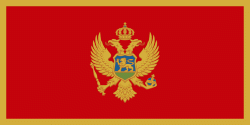Petnjica Municipality (Petnjica)
Petnjica Municipality (Montenegrin: Opština Petnjica / Општина Петњица) is one of the municipalities of Montenegro. The municipality is located in northeastern region of Montenegro, being part of Bihor and Sandžak regions. The center is Petnjica. Petnjica Municipality was created in 2013, when it was split from Berane Municipality.
Petnjica Municipality is divided into 7 subdivisions (Montenegrin Latin: mjesne zajednice, singular: mjesna zajednica) with 25 settlements (naselja, singular: naselje). Petnjica Municipality Subdivisions; Bor Subdivision (Bor and Ponor), Petnjica Subdivision (Petnjica, Godočelje, Johovica, Lagatore, Lazi, Pahulj and Radmanci), Savin Bor Subdivision (Savin Bor, Dašča Rijeka, Dobrodole and Kruščica), Javorova Subdivision (Javorova, Murovac and Poroče). Trpezi Subdivision (Trpezi and Kalica), Tucanje Subdivision (Tucanje, Azane, Lješnica, Orahovo and Vrševo) and Vrbica (Upper and Lower).
Petnjica Municipality is divided into 7 subdivisions (Montenegrin Latin: mjesne zajednice, singular: mjesna zajednica) with 25 settlements (naselja, singular: naselje). Petnjica Municipality Subdivisions; Bor Subdivision (Bor and Ponor), Petnjica Subdivision (Petnjica, Godočelje, Johovica, Lagatore, Lazi, Pahulj and Radmanci), Savin Bor Subdivision (Savin Bor, Dašča Rijeka, Dobrodole and Kruščica), Javorova Subdivision (Javorova, Murovac and Poroče). Trpezi Subdivision (Trpezi and Kalica), Tucanje Subdivision (Tucanje, Azane, Lješnica, Orahovo and Vrševo) and Vrbica (Upper and Lower).
Map - Petnjica Municipality (Petnjica)
Map
Country - Montenegro
 |
 |
| Flag of Montenegro | |
During the Early Medieval period, three principalities were located on the territory of modern-day Montenegro: Duklja, roughly corresponding to the southern half; Travunia, the west; and Rascia proper, the north. The Principality of Zeta emerged in the 14th and 15th centuries. From the late 14th century to the late 18th century, large parts of southern Montenegro were ruled by the Venetian Republic and incorporated into Venetian Albania. The name Montenegro was first used to refer to the country in the late 15th century. After falling under Ottoman Empire rule, Montenegro gained its semi-autonomy in 1696 under the rule of the House of Petrović-Njegoš, first as a theocracy and later as a secular principality. Montenegro's independence was recognised by the Great Powers at the Congress of Berlin in 1878. In 1910, the country became a kingdom.
Currency / Language
| ISO | Currency | Symbol | Significant figures |
|---|---|---|---|
| EUR | Euro | € | 2 |
| ISO | Language |
|---|---|
| SQ | Albanian language |
| BS | Bosnian language |
| HR | Croatian language |
| HU | Hungarian language |
| SR | Serbian language |















